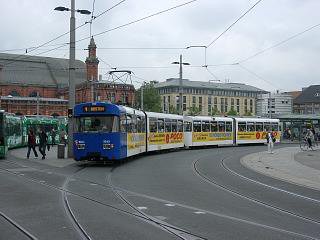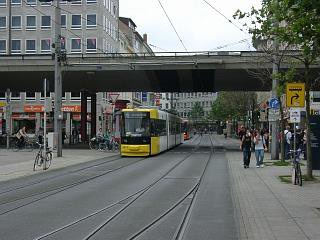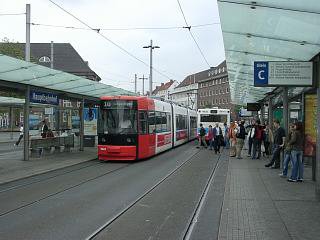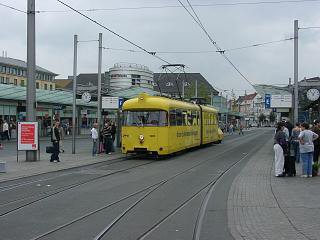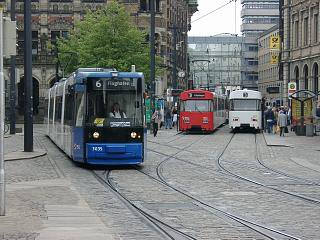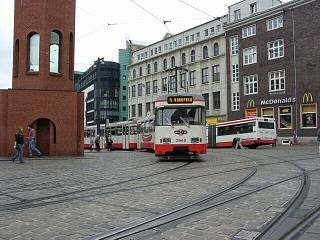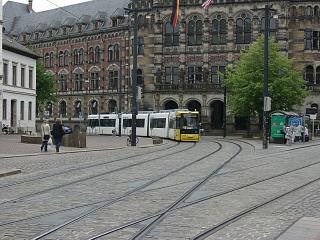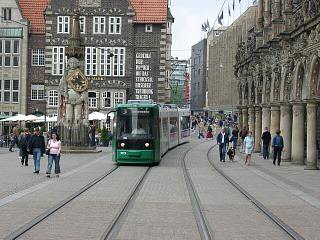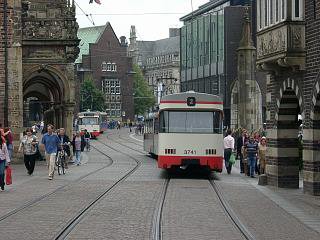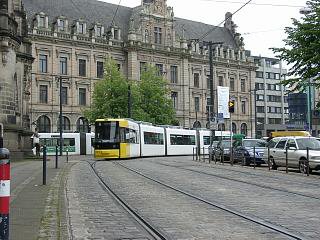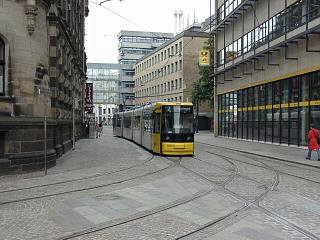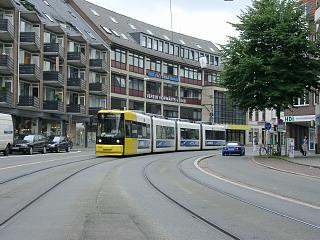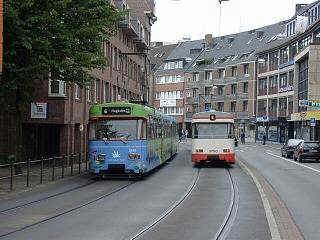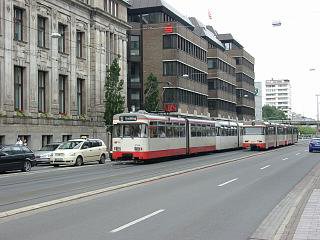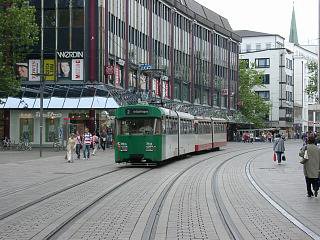Bremen - a Hanseatic City with interesting tramways I.
Instead of making one big round-trip through the tram cities of Germany, like last year or the year before, we chose to make several smaller ones this year. We've already visited Postdam and Berlin two months ago, and now we took a trip to the western parts.
The historical city that still bears the memory of the medieval Hanseatic League in its name and in license-plate code ("Freie Hansestadt Bremen" - "Free Hanseatic City of Bremen" and "HB" for "Hansestadt Bremen"), has a population of 540,000. The public transit operator BSAG (Bremer Strassenbahnen AG) operates 8+3 tram lines with 121 vehicles. They also operate buses (about 210 of 'em).
In front of the main railway station we found a six-track tramway station, also used by buses. This was definately a great place to take photos, even in this bad weather.
Most (but not all) of the tram lines meet here at the railway station, so we had a selection of many services to chose from. Interestingly, tram lines are marked with colors here, and most vehicles feature one of these colors on their front - but not necessarily the color of the particular line they're on.
The newest type in the tram fleet is the four-section AEG GT8N - a "relative" of the R2.2 of Munich, the GT6N of Berlin, the GT6M of Augsburg and other versions of the 100% low-floor light rail vehicle originally developed by M.A.N.
Bremen has had some rarther interesting articulated trams in the past: for example a 3-axle (2+1) "semi-trailer" type around the fifties, or the characteristic Hansa GT4 "Kurzgelenkwagen", like the one on the picture, in the sixties-seventies. Unfortunately these types are gone now - the Hansa GT4 on the photo is used as a rail grinder. You can recognise the "cousinhood" with the Rathgeber GT4 of Munich.
The junction Domsheide in the inner city is one of the nicest tram junctions I ever saw. To the right-hand side you can see a more modern version of the GT4, built by the company Wegmann.
They also have matching trailers with the same charasteristics to form double units. Originally these cars utilised a hydraulically controlled articulation joint, but it proved to be inefficient, so it was replaced by another mechanism designed by M.A.N. around 1982.
I love this sight of old (buildings) and new (trams) together!
By the way, Bremen has a lovely historical inner city, well worth a visit! In the middle of the picture you can see the city hall built around 1405 and renovated during the 17th century.
Roland, the knight (a statue acting as a symbol of civic freedom) to the left, the city hall to the right, and inbetween a low-floor tramcar.
Two Wegmanns winding around in this historic scenery.
More actitectural beauties.
We're still near the stop Domsheide.
A scenic tram/road crossing a bit further.
Here trams run on top of a raised-surface public transit lane, also used by buses.
We also saw trams with all-over ads.
Another section of a raised public transit lane.
A "green-faced" Wegmann unit in a mall. The people in this city seem to get on well with trams.
